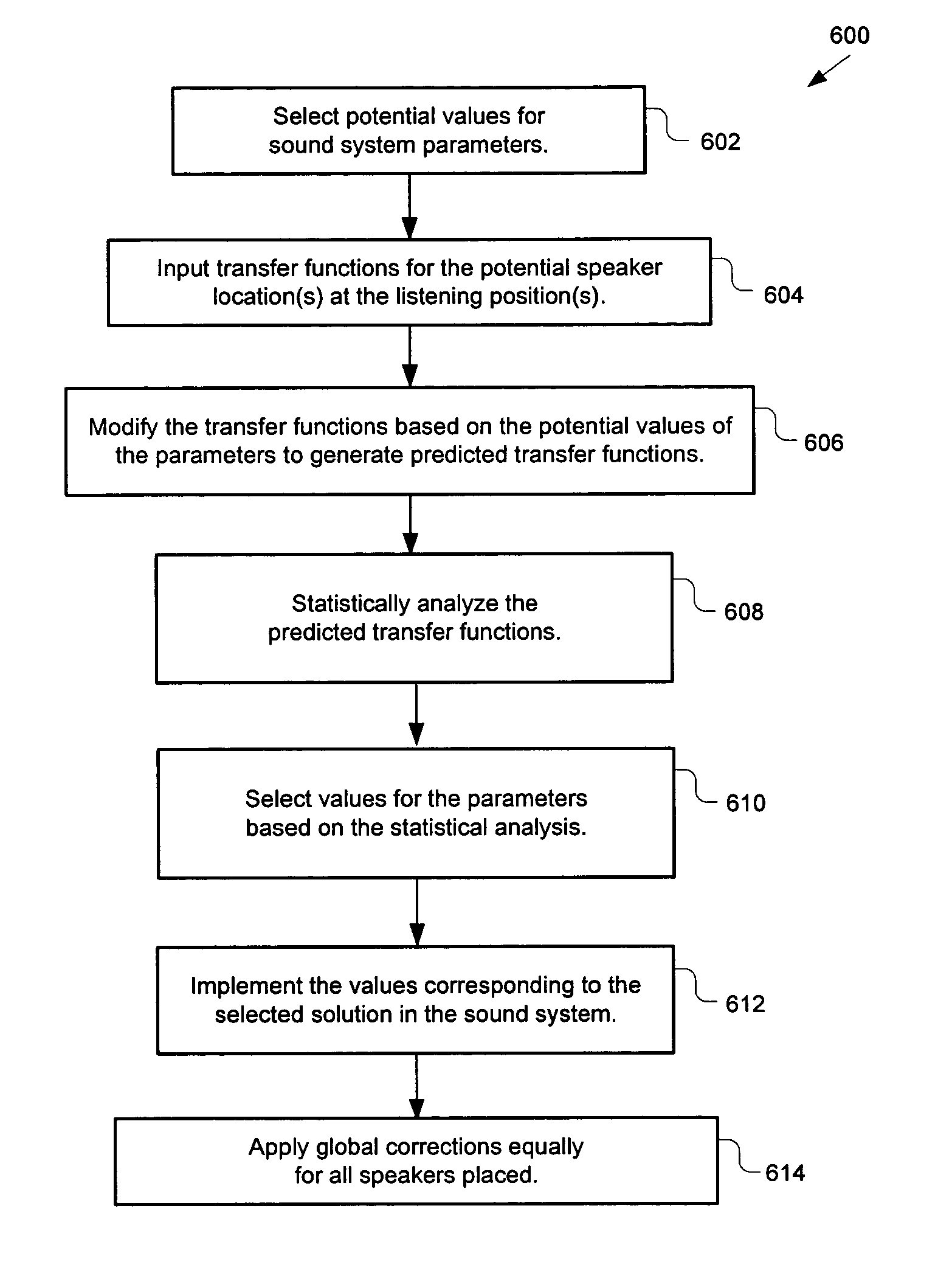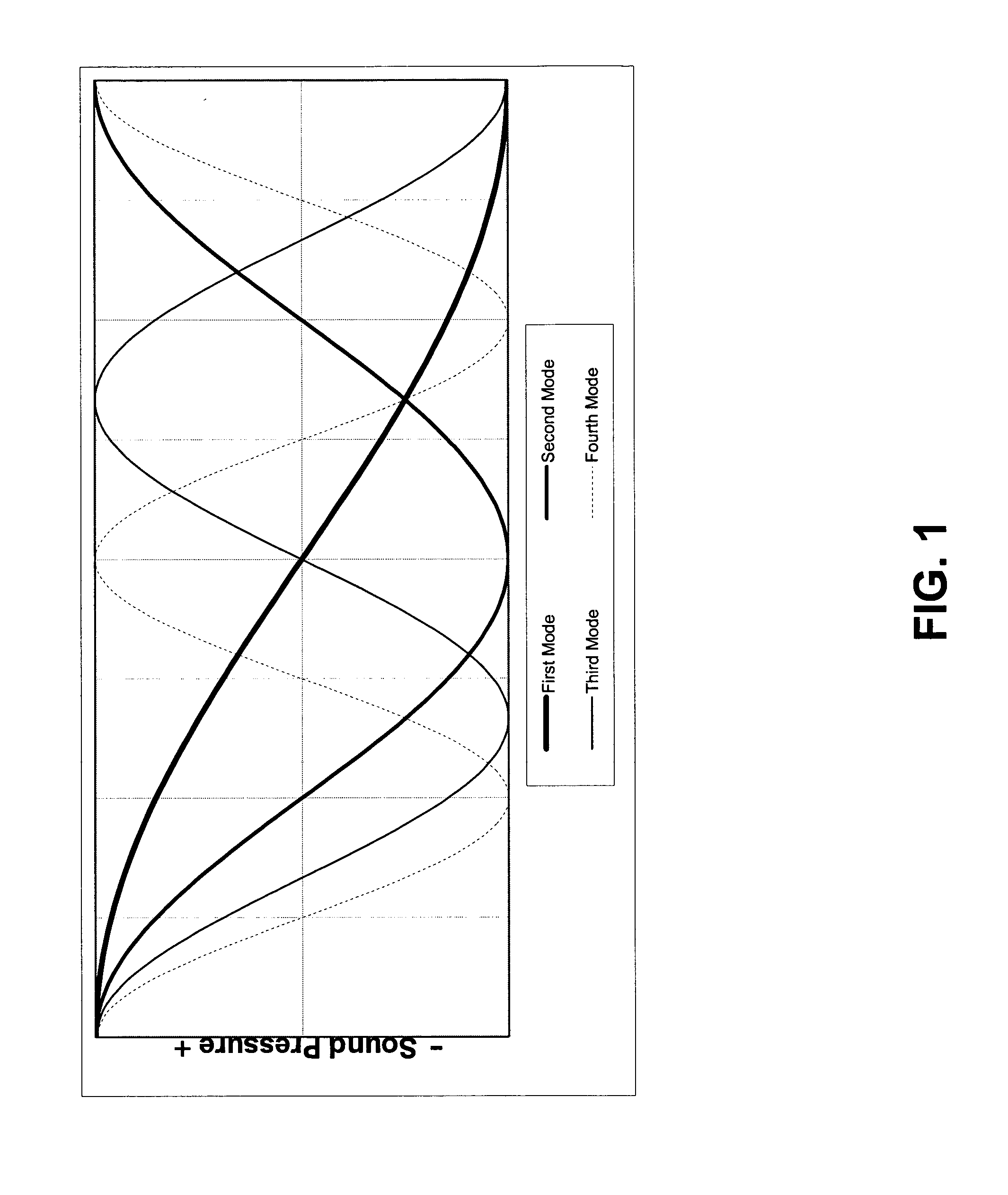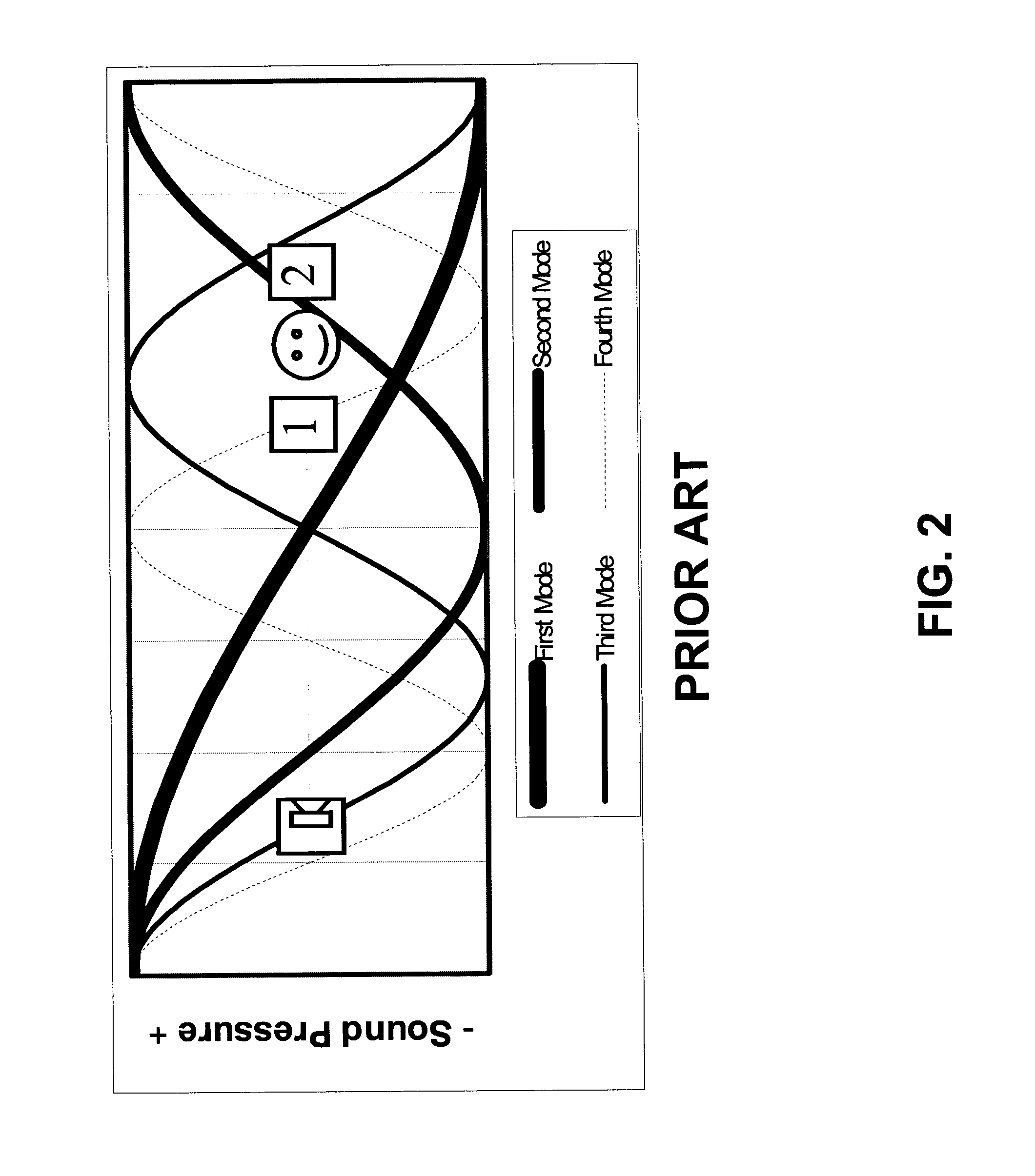System for selecting speaker locations in an audio system
a speaker location and audio system technology, applied in the direction of loudspeaker enclosure positioning, stereophonic arrangments, stereophonic circuit arrangements, etc., can solve the problems of incorrect amplitude deviation, single location potentially creating problems, and adversely affecting the frequency response performance of the sound system
- Summary
- Abstract
- Description
- Claims
- Application Information
AI Technical Summary
Benefits of technology
Problems solved by technology
Method used
Image
Examples
example 1
, which has one wall with a 45° angle, shows that the low-frequency analysis may be applied to any room configuration, such as a non-rectangular room. Further, the system in Example 1 has the number and positions of subwoofers predetermined. The low-frequency analysis in Example 1 focuses on correction factors to improve the low-frequency response of the system. For example, correction factors directed to gain, delay, and equalization are applied to at least some of the loudspeakers in The results of the low-frequency analysis, as shown in FIGS. 16 and 17 and Table 1 show that with the analysis, the mean spatial variance and variance of the spatial average have decreased dramatically, which is beneficial, and the acoustic efficiency has increased slightly, which is also beneficial.
example 2
The second system investigated in Example 2 is a $300,000+ dedicated home theater. FIG. 18 describes the layout of the room in Example 2. The system features one subwoofer in each corner of the room, a front-projection video system and a riser for the second row of seating. The room is approximately 26′×17′ and has a 9′ ceiling. Two of the walls are constructed of concrete blocks and two of the walls are constructed from drywall and 2″×4″ studs. The floor is a carpeted concrete slab. The second row of seating is on an 8″ riser constructed of plywood and 2″×4″ studs. The room features extensive damping on all walls. FIGS. 19 and 20 define the low frequency performance before and after low-frequency analysis. Table 2 compares the performance of the system in Example 2 before and after low-frequency analysis.
TABLE 2Low-frequencyMeanVariance ofActiveanalysisSpatialthe spatialAcousticSubwoofers(yes / no)VarianceaverageEfficiency1, 2, 3, 4No5.1 dB21.3 dB−17.3 dB1, 2, 3, 4Yes2.1 dB17.4 dB...
example 3
highlights potentially different solutions based on the number of subwoofers, placement of subwoofers, and correction factors applied. FIG. 23 provides a solution for subwoofers that are placed in the same configuration as shown in FIG. 22. Using low-frequency analysis, FIG. 23 illustrates that with the same configuration, the mean spatial variance decreases dramatically, the variance of the spatial average decreases, and the acoustic efficiency decreases. FIG. 24 provides a solution for subwoofers that are placed in each corner of the room. Using the low-frequency analysis, FIG. 24 shows that the mean spatial variance, variance of the spatial average, and acoustic efficiency are significantly improved.
PUM
 Login to View More
Login to View More Abstract
Description
Claims
Application Information
 Login to View More
Login to View More - R&D
- Intellectual Property
- Life Sciences
- Materials
- Tech Scout
- Unparalleled Data Quality
- Higher Quality Content
- 60% Fewer Hallucinations
Browse by: Latest US Patents, China's latest patents, Technical Efficacy Thesaurus, Application Domain, Technology Topic, Popular Technical Reports.
© 2025 PatSnap. All rights reserved.Legal|Privacy policy|Modern Slavery Act Transparency Statement|Sitemap|About US| Contact US: help@patsnap.com



